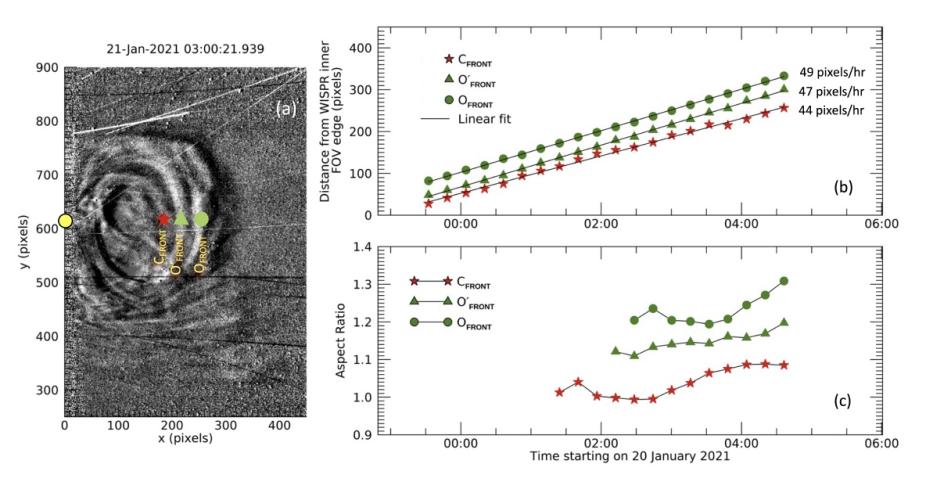Astrophysical Journal— (Published: December 2024) Despite the significance of coronal mass ejections (CMEs) in space weather, a comprehensive understanding of their interior morphology remains a scientific challenge, particularly with the advent of many state-of-the-art solar missions such as the Parker Solar Probe (Parker) and Solar Orbiter (SO). In this study, we present an analysis of a CME and its interior structure observed during the seventh solar encounter of the Parker Solar Probe, utilizing the data from its Wide-Field Imager for Solar PRobe (WISPR) heliospheric imager. We observe a complex CME structure consisting of non-concentric nested rings, which we argue is a signature of the embedded helical magnetic flux rope (MFR) of the CME. This CME exhibits a general three-part density structure but with no significantly bright front and core, revealing its overall configuration with a highly structured intensity pattern. We demonstrate the dynamical properties and morphology of these nested density structures, indicating that they outline the magnetic field geometry and the projection of the three-dimensional structure of the flux rope along the lines of sight of the WISPR imager. Comparisons of observations from various viewpoints suggest that these CME substructures can be discerned owing to the ideal viewing perspective, close proximity, and spatial resolution of the observing instrument.

Despite the significance of coronal mass ejections (CMEs) in space weather, a comprehensive understanding of their interior morphology remains a scientific challenge, particularly with the advent of many state-of-the-art solar missions such as the Parker Solar Probe (Parker) and Solar Orbiter (SO). In this study, we present an analysis of a CME and its interior structure observed during the seventh solar encounter of the Parker Solar Probe, utilizing the data from its Wide-Field Imager for Solar PRobe (WISPR) heliospheric imager. We observe a complex CME structure consisting of non-concentric nested rings, which we argue is a signature of the embedded helical magnetic flux rope (MFR) of the CME. This CME exhibits a general three-part density structure but with no significantly bright front and core, revealing its overall configuration with a highly structured intensity pattern. We demonstrate the dynamical properties and morphology of these nested density structures, indicating that they outline the magnetic field geometry and the projection of the three-dimensional structure of the flux rope along the lines of sight of the WISPR imager. Comparisons of observations from various viewpoints suggest that these CME substructures can be discerned owing to the ideal viewing perspective, close proximity, and spatial resolution of the observing instrument.